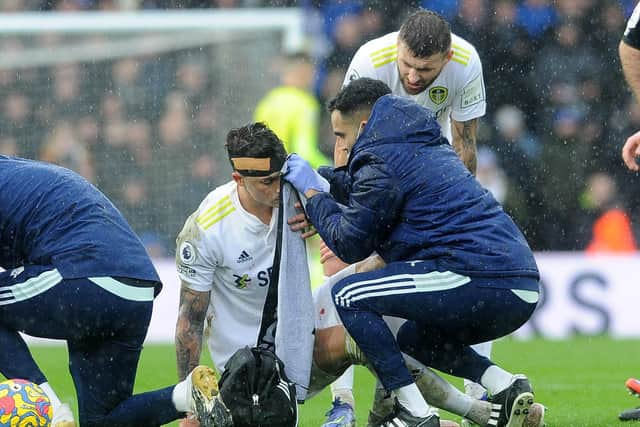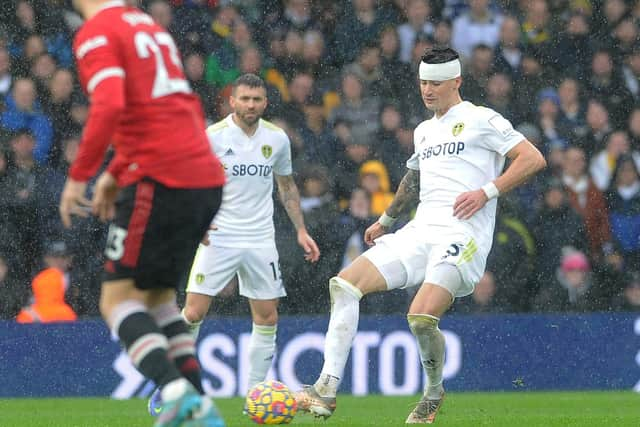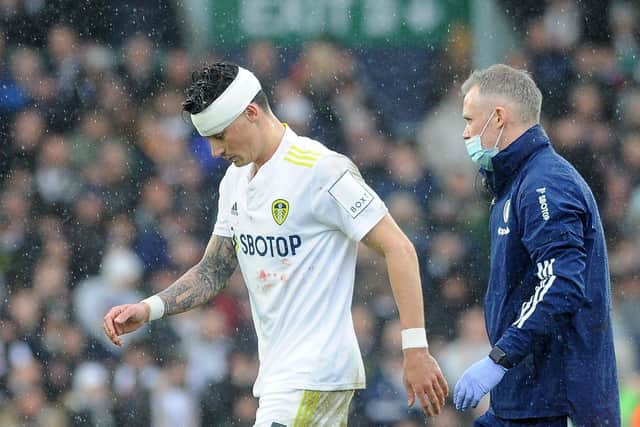Case of Leeds United’s Robin Koch shows football is not taking own concussion rules seriously - Stuart Rayner
It was not just the much-talked about non-substitution of Robin Koch which highlighted that in Sunday’s game between Leeds United and Manchester United. At the same time, a home fan threw an object at the Red Devils’ Anthony Elanga, a red flare was deposited onto the pitch from the away end.
As the teams walked out for the game, there was a yellow flare burning in one corner of the ground, a red one opposite. They are becoming commonplace at English football grounds.
Advertisement
Hide AdAdvertisement
Hide AdDuring Sheffield Wednesday’s win at Doncaster Rovers a blue one was chucked into Jonathan Mitchell’s six-yard box as the Owls fans behind him celebrated a goal.


Barely a game goes by without one, it seems.
Flares, smoke bombs and fireworks have been illegal at British football grounds since 1985. They look impressive but, when they burn at temperatures hot enough to melt metal, they can do a lot of damage to a footballer or a fan if a throw goes astray.
How are so many getting through? Are clubs not checking properly?
Then again, if they are not taking proper care of their own players, is it a surprise?
Advertisement
Hide AdAdvertisement
Hide Ad

It was hard to swallow Leeds’s claims they followed concussion protocols by allowing Koch to play on after a nasty clash of heads left blood pouring from him in the 12th minute.
Concussion can sometimes take 24 hours to show itself, in Koch’s case it took a quarter of an hour before he sat down on the pitch, then walked jelly-legged off.
The Leeds medical staff almost certainly went through all the questions they had to ask, looked for all the signs. Fully qualified, they were right in the thick of it.
The instruction is, if there is a suspicion of concussion, that must be the end of the player’s game. It is hard to imagine there was not even a suspicion from those who told Koch to sit down if he felt symptoms later. There certainly was from my unqualified, more distant and maybe over-cautious vantage point but better over-caution in matters likes that.
Advertisement
Hide AdAdvertisement
Hide Ad

So, the almost certainly incorrect suspicion is the Leeds team erred on the side of keeping a key player on the pitch. Last month they allowed Junior Firpo to stay on at West Ham United about half an hour (including half-time) before he came off complaining of blurred vision.
Having the decision made by someone neutral and qualified would remove the damaging suspicion of club medics being leaned on. The Premier League or Professional Footballer’s Association (PFA) could easily afford to pay for it.
The chances of a player suffering second impact syndrome – effectively a second concussion before recovering from a first – is mercifully low but the odds of them dying if they do are horribly high.
What Leeds really needed on Sunday – and have asked for, as have the PFA and many others – is the chance to take a player in Koch’s condition into the dressing room to have a good look at him whilst a temporary substitute takes his place. If, 15 minutes later, Koch was still not showing signs of concussion, they could develop later but it is a much better precaution.
Advertisement
Hide AdAdvertisement
Hide AdThe medics took four minutes assessing Koch and dressing his wounds. It is widely regarded as nowhere near enough to determine if a player has concussion but, still, it was a long time to hold the game up.
The game needs more rules to better protect those in the grounds but first it needs to take the ones it has more seriously.
Waiting for someone to die or be blinded is not good enough.
Comment Guidelines
National World encourages reader discussion on our stories. User feedback, insights and back-and-forth exchanges add a rich layer of context to reporting. Please review our Community Guidelines before commenting.